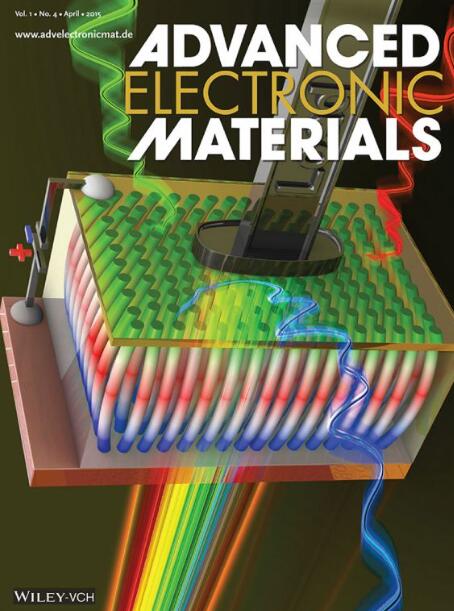采用喷墨打印技术制备具有近红外探测功能的半透明有机光电二极管
IF 5.3
2区 材料科学
Q2 MATERIALS SCIENCE, MULTIDISCIPLINARY
引用次数: 0
摘要
透明有机光电探测器有望应用于可穿戴和通信电子领域,在这些领域它们可以作为难以察觉的传感器。然而,常见的制造技术,如自旋镀膜和蒸发,与高通量生产和可扩展性的兼容性有限。在这项工作中,展示了在氧化铟锡电极上喷墨印刷的半透明和不透明有机光电二极管,在可见光范围内的透射率高达70.6%。该二极管的有源层包括透明给体聚合物和Y7作为非富勒烯受体。这种体异质结导致近红外响应率在- 2 V和840 nm下,具有聚(3,4 -乙烯二氧噻吩)聚苯乙烯磺酸盐电极的半透明二极管的最大值为12±2 mA W - 1,具有Ag电极的不透明器件的最大值为60±7 mA W - 1。该二极管具有高达3 MHz的高检测速度,使其适用于软机器人的近红外通信系统以及可穿戴健康监测,如脉冲体积描记图所示。本文章由计算机程序翻译,如有差异,请以英文原文为准。
Semi‐Transparent Organic Photodiodes with Near‐Infrared Detection Fabricated by Inkjet Printing
Transparent organic photodetectors are promising for applications in wearable and communication electronics, where they can serve as imperceptible sensors. Yet, common fabrication techniques such as spin coating and evaporation have limited compatibility with high‐throughput production and scalability. In this work, semi‐transparent and opaque organic photodiodes, inkjet‐printed on indium tin oxide electrodes, reaching a transmittance of up to 70.6% in the visible range are demonstrated. The diode's active layer comprises a transparent donor polymer and Y7 as a non‐fullerene acceptor. This bulk heterojunction results in near‐infrared responsivity with maximum values of 12 ± 2 mA W−1 at −2 V and 840 nm for semi‐transparent diodes with Poly(3,4‐ethylenedioxythiophene) polystyrene sulfonate electrodes and 60 ± 7 mA W−1 for opaque devices with Ag electrodes. The diodes exhibit high detection speeds of up to 3 MHz, making them suitable for near‐infrared communication systems for soft robotics as well as wearable health monitoring, as demonstrated by pulse plethysmography.
求助全文
通过发布文献求助,成功后即可免费获取论文全文。
去求助
来源期刊

Advanced Electronic Materials
NANOSCIENCE & NANOTECHNOLOGYMATERIALS SCIE-MATERIALS SCIENCE, MULTIDISCIPLINARY
CiteScore
11.00
自引率
3.20%
发文量
433
期刊介绍:
Advanced Electronic Materials is an interdisciplinary forum for peer-reviewed, high-quality, high-impact research in the fields of materials science, physics, and engineering of electronic and magnetic materials. It includes research on physics and physical properties of electronic and magnetic materials, spintronics, electronics, device physics and engineering, micro- and nano-electromechanical systems, and organic electronics, in addition to fundamental research.
 求助内容:
求助内容: 应助结果提醒方式:
应助结果提醒方式:


